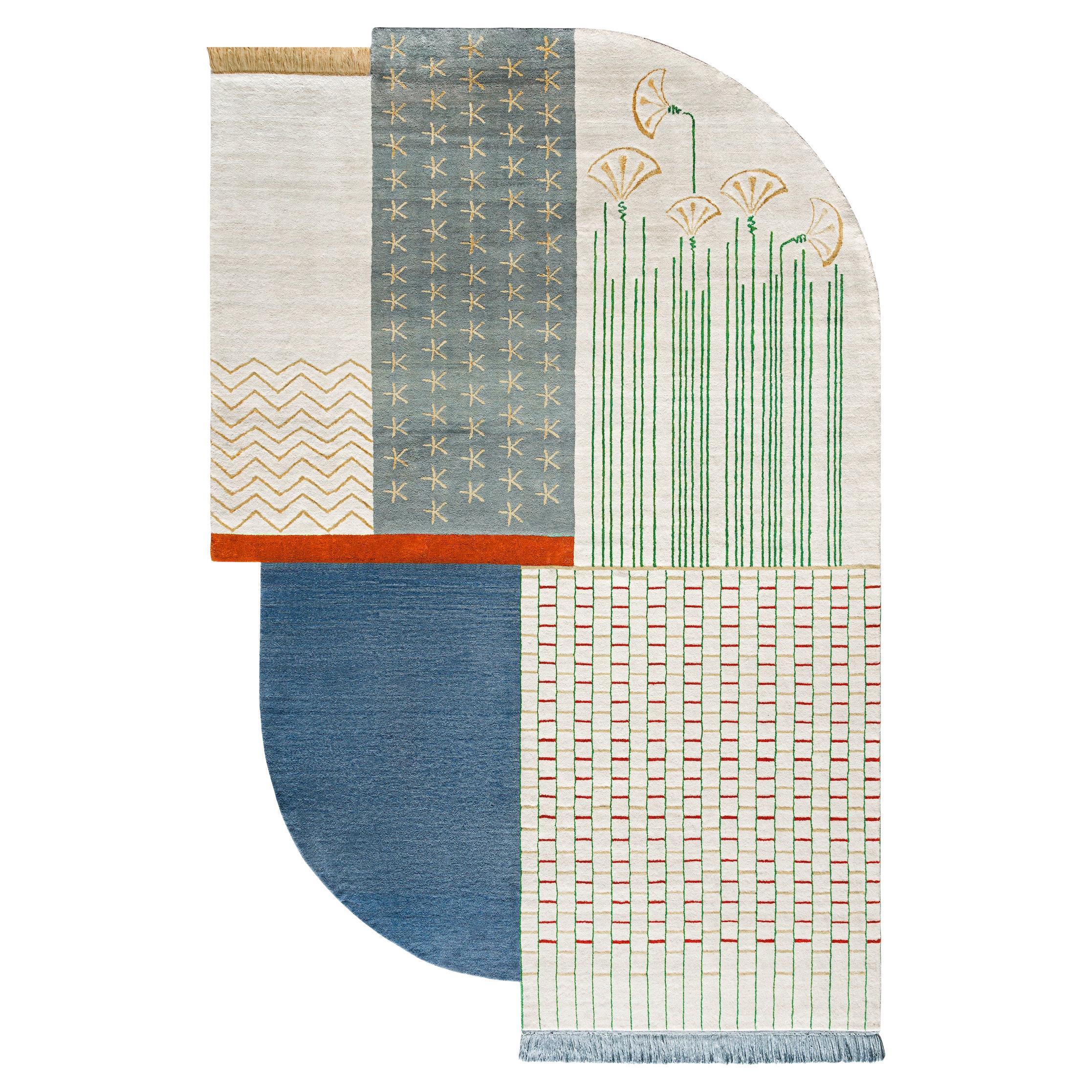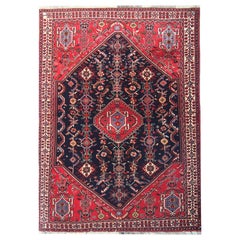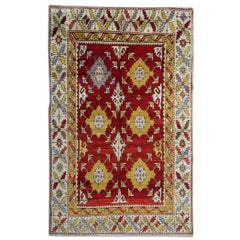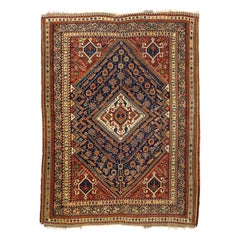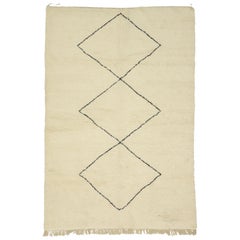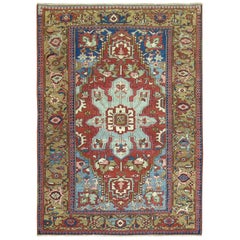More Carpets
21st Century and Contemporary Moroccan Mid-Century Modern More Carpets
Wool
Mid-20th Century Moroccan Kilim More Carpets
Wool
Early 20th Century Persian Heriz Serapi More Carpets
Wool
20th Century Persian Serapi More Carpets
Wool
20th Century Persian Malayer More Carpets
Wool
Mid-20th Century Turkish Oushak More Carpets
Wool
21st Century and Contemporary Indian Organic Modern More Carpets
Wool
Mid-20th Century Turkish Oushak More Carpets
Wool
1980s American Post-Modern Vintage More Carpets
Wool
Early 1900s Turkish Oushak Antique More Carpets
Organic Material, Silk
20th Century Turkish Mid-Century Modern More Carpets
Wool
1970s Czech Mid-Century Modern Vintage More Carpets
Wool
1950s Turkish Kilim Vintage More Carpets
Wool, Organic Material, Natural Fiber, Cotton
21st Century and Contemporary Indian Modern More Carpets
Wool, Cotton
1950s Mid-Century Modern Vintage More Carpets
Textile
Late 20th Century Turkish Tabriz More Carpets
Metallic Thread
2010s Moroccan Tribal More Carpets
Wool
20th Century Turkish Bohemian More Carpets
Wool
Early 20th Century Persian Rustic More Carpets
Wool
21st Century and Contemporary Persian Tribal More Carpets
Wool
Early 20th Century Persian Tabriz More Carpets
Wool
2010s Indian Modern More Carpets
Wool
21st Century and Contemporary Turkish Oushak More Carpets
Wool
2010s Moroccan Tribal More Carpets
Wool
21st Century and Contemporary American Modern More Carpets
Wool, Cotton
2010s Moroccan Tribal More Carpets
Wool
21st Century and Contemporary Persian More Carpets
Wool
1960s Persian Tabriz Vintage More Carpets
Wool
21st Century and Contemporary Moroccan Expressionist More Carpets
Wool
21st Century and Contemporary Moroccan Bauhaus More Carpets
Wool
21st Century and Contemporary Tribal More Carpets
Wool
21st Century and Contemporary Colombian More Carpets
Jute, Leather
21st Century and Contemporary Afghan Modern More Carpets
Wool
21st Century and Contemporary Moroccan Expressionist More Carpets
Wool
21st Century and Contemporary Moroccan Expressionist More Carpets
Wool
1960s Persian Medieval Vintage More Carpets
Wool
21st Century and Contemporary Moroccan Bauhaus More Carpets
Wool
20th Century Turkish Rustic More Carpets
Organic Material, Cotton, Wool
21st Century and Contemporary Moroccan Minimalist More Carpets
Wool
Early 2000s Persian Tribal More Carpets
Wool
21st Century and Contemporary Indian Scandinavian Modern More Carpets
Wool
2010s Moroccan Tribal More Carpets
Wool
2010s Indian Modern More Carpets
Wool
2010s Moroccan Tribal More Carpets
Wool
21st Century and Contemporary Turkish Modern More Carpets
Wool
18th Century French Aubusson Antique More Carpets
Wool
21st Century and Contemporary Pakistani Tribal More Carpets
Wool
21st Century and Contemporary Indian Modern More Carpets
Wool
21st Century and Contemporary Moroccan Expressionist More Carpets
Wool
21st Century and Contemporary Moroccan Post-Modern More Carpets
Wool
21st Century and Contemporary Moroccan Expressionist More Carpets
Wool
21st Century and Contemporary Indian Modern More Carpets
Wool
21st Century and Contemporary Indian Modern More Carpets
Wool
2010s Moroccan Tribal More Carpets
Wool
21st Century and Contemporary Moroccan Expressionist More Carpets
Wool
21st Century and Contemporary Moroccan Expressionist More Carpets
Wool
Early 2000s Persian Tribal More Carpets
Wool
Mid-20th Century Moroccan Bohemian More Carpets
Wool
Antique, New and Vintage Area Rugs and Carpets for Your Home
Antique, new and vintage area rugs and carpets are a simple way to add warmth and style to any space. Area rugs can be seasonal or changed with other decorative objects to refresh an interior. Carpet piles materials can vary from wool and cotton to silk and synthetic fibers, and the purpose of a floor covering can range from reducing noise to offering a place to sit.
Vintage rugs can ground a space, and arranging furniture around them creates a measured focal point. Key furniture pieces can be placed on the rug or just the legs, such as with furniture like coffee tables in your living room.
So, how can you tell if a rug is high quality or vintage?
The three main components that determine the quality of a piece are the dyes, the wool and the number of knots per square inch. Ultimately, however, if you want to be sure the rug you’re buying is truly an antique, it is best to consult an expert.
If you want a creative design that stands out, area rugs or carpets can provide layers of color. Rugs and carpets reflect a global heritage of textiles and weaving, such as ornately patterned Persian and Indian designs. Visually striking Chinese rugs can add a delicate touch of color, while modern rugs make a statement with their geometric patterns.
Turkish rugs, with their ruby reds and misted blues, their entwined botanical designs and rhythmic geometries, are as beloved today as they were in the 13th century. The West’s current infatuation with Moroccan and North African tribal rugs stretches to the mid-20th century, when modern furniture designers embraced bold geometric patterns and even bolder palettes as counterpoints to form-follows-function interiors. Alvar Aalto, Frank Lloyd Wright and Le Corbusier were among the designers who used these rustic, natural rugs to offset austere interiors.
If you properly maintain your antique and vintage rugs, they will last for many years. When you’re thinking about how to clean a rug, it is important to keep in mind that your vacuum is not too harsh for your favorite floor covering. Frequent vacuuming is in fact necessary to remove everyday dirt that otherwise wears down the pile. Omri Schwartz of Nazmiyal does, however, stipulate that “it’s best to use an ordinary suction vacuum without bristles, as the bristles can damage the rug’s pile.” Rotating the carpet every couple of years is also recommended — it ensures that the rug gets even foot traffic.
On 1stDibs, find a vintage rug or carpet to add a layer of beauty and function to your room.
